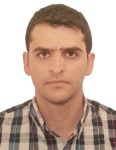
Tadashi NAKASU
Chulalongkorn University, Thailand
Title: Disaster Resilience and Demographic Risk
Submitted Date: 18-3-2017
Biography
Tadashi NAKASU is an Academic researcher/Lecturer at College of Population Studies, Chulalongkorn University in Thailand. He had been working at NIED (National Research Institute for Earth Science and Disaster Prevention) as a principal research fellow and ICHARM (International Centre for Water Hazard and Risk Management), PWRI (Public Works Research Institute) as a research specialist in Japan for a decade. He has conducted many disaster field surveys such as Indian Ocean Tsunami (2004), Hurricane Katrina (2005), Typhoon Ondoy and Pepeng (2009), Great East Japan Earthquake and Tsunami (2011), and Chao Phraya River Flood (2011). He also conducted abundant disaster management research around the globe. He had been a project leader of the Working Group of Hydrology, the Typhoon Committee (WMO and UN/ESCAP) for nearly 3 years. He was also a visiting researcher at JICA (Japan International Cooperation Agency) and an adjunct instructor at several universities in Japan.
Abstract
In March 2015, the Sendai Framework for Disaster Risk Reduction mentioned “build back better†as one of the four priorities for action in the Third UN World Conference on Disaster Risk Reduction (UNISDR 2015). Disaster recovery has been of great concern in the disaster risk reduction field(Qurantelli, E.L. 1989; Tierney and Nigg 1993). However, disaster recovery theories have not attracted much attention from researchers to date (Etkin 2015). In addition, disaster risk due to demographic changes, especially a declining population and aging society, also has not been well recognized. This paper explains how disaster recovery theories and demographic risks are significant in the examination of the recovery from a disaster in order to build a resilient society. The two disaster recovery theories are used, along with several case studies, to investigate disaster recovery processes with declining populations and aging societies. One is Haas et al. (E.J., R.W., and M.J. 1977) and Bates et al. (Bates 1982; Bates and Peacock 1989, 2008), who argue “the recovery process follows or facilitates the trend which the affected communities originally had before the disasters.†The other is Hirose (1982), who indicates that “the disaster recovery process depends on three major ingredients, the physical scale of the hazard, aid from outside, and community strength (Hirose 1982).†After the examining these viewpoints, the paper investigates disaster recovery processes of municipalities with declining populations and aging societies severely affected by the 1993 Southwest-off Hokkaido Earthquake and the 2011 Great East Japan Earthquake and Tsunami disaster. Through analyzing the disaster recovery process, this paper attempts to answer the following questions: Could it be said that disaster recovery reflects pre-disaster situations and how do we use this thought for the disaster management? What is a better way to consider disaster resiliency, especially, ‘build back better’, for our sustainable future?

Makiko KONDO
Graduate school of health science, Okayama University, JPN
Title: Creating a pillars of resilience model for disaster-stricken communities employing the wisdom of predecessors who overcame Hansen’s disease and ancient disasters
Submitted Date: 2017-05-15
Biography
Makiko KONDO obtained her Doctor of Philosophy in Nursing from Osaka Prefecture University in 2007. Currently, she is an associate professor at Okayama University’s Graduate School of Health Sciences, where she teaches undergraduate, postgraduate, and doctoral nursing courses. Her field of expertise is qualitative studies, and her research themes involve caring for parents with cancer and their children, grief care, clinical nursing competency, and extreme cases of Hansen’s disease.
Abstract
Statement of the Problem: The Great East Japan Earthquake in 2011 caused not only several casualties but also isolated several towns that did not receive aid rapidly due to widespread destruction. We must ensure communities are self-contained in order to maintain autonomy and independence after disasters since Nankai megathrust earthquakes are expected to occur in the near future. This study aims at creating a resilience model for disaster-stricken communities by employing ancient wisdom. Methodology & Theoretical Orientation: We utilized Strauss & Corbin’s Grounded Theory approach and created an essential pillar from ancient wisdom, garnering required support from official reports and newspapers about recent disasters. First, we extracted an essential pillar from literature on Hansen’s disease survivors, who overcame severe poverty during World War II by creating a superior community in an isolated island. Second, we obtained an essential pillar from ancient documents regarding disasters and famines during the Edo period or earlier. Findings: According to Hansen’s disease survivors, the essential pillars for creating a superior community are: 1) developing safety strategies through self-sufficiency, 2) promoting mental strength to overcome hardship, 3) assembling wise people to overcome hardship, 4) formulating self-defense organization, 5) building systems for protecting weaker individuals and assisting each other, 6) creating strategies for receiving external aid, and 7) evolving uncomplicated survival strategies. Meanwhile, the essential pillars from ancient wisdom include: a) developing strategies for future generations, b) employing places or festivals that residents value to begin reconstruction after disasters, c) supporting families debilitated by death, d) fostering spirituality and philosophy to endure loss, and e) receiving assistance from the government. Conclusion & Significance: Predecessors’ wisdom provides valuable suggestions for creating a strong community to cope with disasters. We will continue to garner required support.

